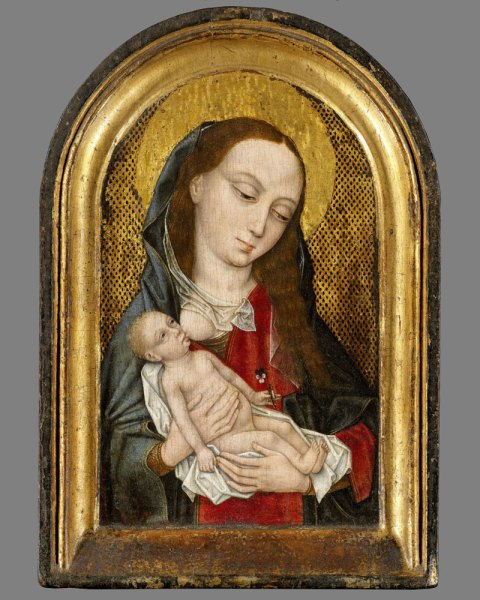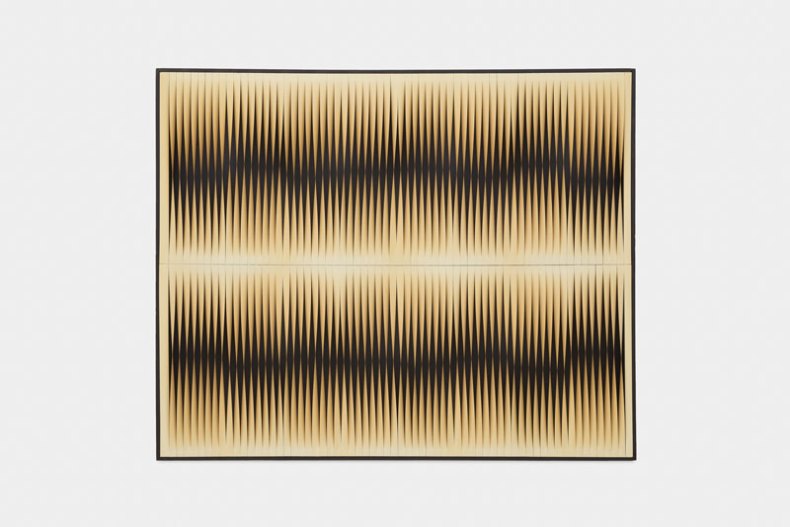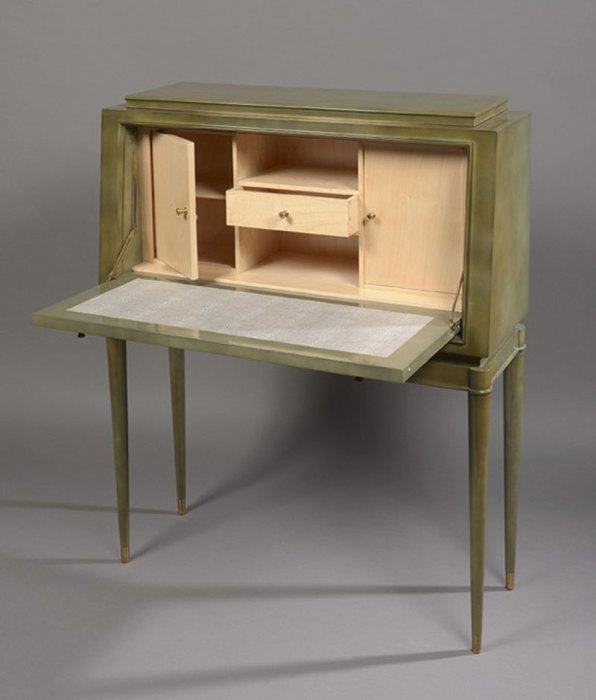From the January issue of Apollo: preview and subscribe here
It is indicative of the nature of Brussels’ BRAFA art fair that, in the autumn, three exhibitors allowed a coach-load of journalists to pitch up at their homes and snoop around their private collections. It is hard to imagine the participants of many other established, high-end art fairs displaying such openness. Yet, as Francis Maere, the Ghent-based art dealer and longstanding BRAFA exhibitor, says, this is ‘the Belgian way’ and typical of the Belgian art trade’s ‘home atmosphere’.
One of those who opened their doors was the fair’s affable president, the modern art dealer and collector Harold t’Kint de Roodenbeke, who describes the event as ‘friendly, quality and eclectic’. Since his election in 2012, t’Kint de Roodenbeke has sought to raise BRAFA’s international profile: ‘Before, the selection of the galleries was based on discussion within the board. Now I’ve tried to impose objective criteria: quality of the gallery, geographical origin, participation at other quality fairs, and field of activity. Quality attracts clients.’
BRAFA attracts a knowledgeable and committed audience, but the Belgian market has traditionally been fairly domestic and t’Kint de Roodenbeke is trying to broaden the fair’s audience through the establishment of a ‘collectors club’ to connect ‘clients and art lovers from clubs in Belgium and the whole of Europe’.
Although the organisers are keen to retain BRAFA’s reputation as intimate and manageable in scale, increased demand has meant that for its 61st edition (23–31 January), they will expand exhibitor numbers from 126 to 136. The fair will accommodate the new exhibitors by taking over an extra 660 square metres of the 19th-century Tour & Taxis exhibition hall, the former industrial complex by the Willebroek Canal that has been the event’s home since 2004, as well as by reconfiguring the layout and entrance.

The Virgin Nursing the Christ Child (c. 1500), follower of Rogier van der Weyden, oil and gold
on Baltic oak panel, in an integral frame, 29 × 20cm. Mullany Fine Art (c. €120,000)
While this year’s exhibitors hail from 17 countries, including Japan, Russia and the USA, for geographical and historical reasons the fair is still heavily weighted towards galleries from Belgium (55) and France (47). Finch & Co and Mullany Fine Art, two of the five British galleries at BRAFA, are committed fans and, after exhibiting here for nine and five years respectively, have established northern European client bases, with collectors in Holland, France, and Germany as well as Belgium. Both also note a rise in the number of American attendees, alongside Russians and South Americans, and the ‘collector’s cabinet mentality’ of many visitors.
This fits with Finch’s eclectic mixture of ethnographic art, natural history and European sculpture, which this year includes a Celtic bronze chariot rein guide in the form of a goddess, dating to the 2nd–1st century BC. Haute Époque sculpture, Mullany’s specialism, is also at home here: ‘Those who visit the fair, and the Belgian people in particular, have a traditional connection with, and great affinity for high quality medieval and Renaissance sculpture and works of art,’ says Nicholas Mullany. ‘BRAFA is a sophisticated rather than ostentatious event. It is a serious art fair rather than a place to be seen.’ Complementing the sculpture is the small devotional panel of The Virgin Nursing the Christ Child (c. 1500) by a follower of Rogier van der Weyden, an intimate work described by Mullany as epitomising what is ‘quintessentially a “BRAFA taste”’.
The fair reflects Brussels’ status as a hub of tribal art, with specialists such as Serge Schoffel, Bernard Dulon, and BRAFA vice-president Didier Claes creating sleek, sculptural presentations each year. Claes, who is among the numerous exhibitors with a gallery in Brussels’ attractive Sablon district, is also president of the city’s non-European art fair, BRUNEAF (20–24 January). He compares BRAFA to its peers: ‘TEFAF is “the best” fair, the Paris Biennale has glamour and flair, and Frieze Masters has got huge potential – and I met lots of new people there. But BRAFA, maybe because it’s my home event and 80 per cent of my clients are Belgian, is the best fair for business.’ Claes adds that ‘Belgium is a country of collectors; relative to its size and population it probably has the highest concentration of collectors of any country.’ He will exhibit a round, striated Luba mask from the Democratic Republic of the Congo – its shape influenced by gourds and alluding to the moon. Old Masters are thinner on the ground here – possibly because TEFAF, which is preeminent in the field, runs a mere six weeks later. However, the return of De Jonckheere to the fair this year bolsters the ranks, showing Flemish Old Masters with more recent artists, including René Magritte.

Torsions 40F 144 (1964–65), Walter Leblanc (1894–1975), polyvinyl on black painted hardboard, 83 × 102cm. Whitford Fine Art (£130,000–£180,000)
A number of dealers, particularly Maere, are keen to extol the qualities of 20th-century Belgian art to an international audience; still the market underdog to French work of the period, Belgian modern art remains largely a domestic preserve in terms of collectors, and few artists other than Magritte are established international names. As a rule the modern art at BRAFA is perhaps more commercial than cutting edge, with household names such as Fernand Léger, Marc Chagall, and Lucio Fontana set to feature. Whitford Fine Art are London exponents of Belgian modern art and, at BRAFA, mix this with British Pop art by the likes of David Spiller and Clive Barker – his works appeal to the Belgian sense of humour, says the gallery’s Gabriel Toso. Belgian artists represented on the stand include Joseph Lacasse and Walter Leblanc, the Zero Group artist behind Torsions 40F 144, a polyvinyl work on black painted hardboard from 1964–65.
The juxtaposition of periods and disciplines, and on-trend talk of ‘dialogues’, has long been one of BRAFA’s central themes, albeit promoted in a more casual manner than some other, younger fairs. So the modern and contemporary art galleries, their numbers consciously kept in check so they do not dominate, set up alongside the antiquities specialists, another traditional strong point at the fair. In this category, don’t miss the South Arabian alabaster stele from the 1st millennium BC to be shown by new exhibitor Safani Gallery of New York. Also in evidence is Continental modern design, a natural partner to antiquities – it’s easy to imagine the stele sharing an elegant study with the writing desk from c. 1950 by French designer Baptistin Spade at Milan-based gallery Robertaebasta.

Writing desk (c. 1950), Baptistin Spade (1891–1969), green lacquered wood and sycamore interior, ht 117cm. Robertaebasta (€20,000)
The Ghent Floralies festival is guest of honour this year, so flowers will festoon the glass-ceilinged Tour & Taxis, with the promised effect one of greenhouse meets art fair. Daily art lectures will offer cerebral exercise; Apollo will be supporting a talk on ukiyo-e paintings in the Victoria and Albert Museum’s collection by Julia Hutt, curator in the Asian department at the museum, which takes place on Monday 25 January.
Though discreet and understated in feel, BRAFA attracts 55,000 visitors, nearly as many as Frieze London, and yet the two events couldn’t be more different. BRAFA manages to achieve a fine balance, as a fair that is stylish yet unpretentious, learned but not intimidating.
BRAFA takes place at Tour & Taxis, Brussels, from 23–31 January.














![Masterpiece [Re]discovery 2022. Photo: Ben Fisher Photography, courtesy of Masterpiece London](http://zephr.apollo-magazine.com/wp-content/uploads/2022/07/MPL2022_4263.jpg)
‘Like landscape, his objects seem to breathe’: Gordon Baldwin (1932–2025)